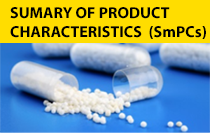
Report Adverse Reaction

Approved fees Schedules

Products Recall And Alert

For Stakeholders

Submit a Complaint

FAQs

Submit Advert Application

Submit Advert Application

Consumer Education
News & Events
Latest News
2024-04-17 00:00:00
Ghana's COVID-19 Safety Monitoring Effects Receive Global Acclaim2024-04-05 00:00:00
FDA AND AFROCET MONTGOMERY MEETS STAKEHOLDERS2024-03-13 00:00:00
NEW FDA FEES AND CHARGES EFFECTIVE MONDAY 18th MARCH 20242024-02-01 00:00:00
DRAFT GUIDELINE FOR PUBLIC CONSULTATION "FDA GUIDELINE ON IDENTIFICATION AND DATA CAPTURE FOR PHARMACEUTICAL TRACEABILITY"2023-11-17 00:00:00
JOHN OWUSU GYAPONG IS THE NEXT ARUA SECRETARY-GENERAL2023-11-17 00:00:00
FDA LAUNCHES THE NATIONAL TOBACCO CONTROL STRATEGYRESPONSE TO CLAIMS ABOUT FAKE FOOD
Accra: July 6, 2024 -The Food and Drugs Authority (FDA) has seen a video on social media showing fruits like watermelon, avocado, bananas, and blueberries that look rubbery and plastic-like. The video also shows fish and meat with magnetic qualities, suggesting they are fake. The FDA wants to address this video and explain the facts.
Fruit Texture Explained
Fruits do not naturally have plastic or rubbery textures. These terms are more commonly associated with synthetic materials. However, certain conditions can make fruits feel a bit rubbery. For example, forced ripening under extreme temperatures can alter the texture of fruits, including avocados.
Fruit texture is determined by the cell wall's composition, including components like cellulose, hemicellulose, and pectin. Enzymes modify these components as the fruit ripens, affecting its firmness and juiciness. Additionally, genetic differences can impact fruit texture by altering cell wall metabolism. Breeding programs aim to develop fruit varieties with optimal textures to meet consumer preferences.
GMO Concerns
Some people think the rubbery texture shown in the video might be related to genetically modified organisms (GMOs). GMOs are organisms that have had their genes modified. Ghana's Technical Advisory Committee reviews GMO applications and recommends them to the National Biosafety Authority (NBA). Sensory analyses are conducted to confirm the authenticity of GMOs in terms of taste and texture. Currently, no such applications have been received by the NBA.
The videos on social media do not claim that foods like watermelon, banana, blueberry, and avocado are GMO, nor do they originate from Ghana. Consumers should know that there are no commercially available GM foods with a rubber-like texture in these fruits. GMOs assessed by the NBA are safe and do not differ in taste or texture from their conventional counterparts.
Handling and Storage
Proper handling and storage after harvest are crucial to maintaining the desired texture of fruits. Controlled atmosphere storage and temperature management help preserve fruit firmness and prevent texture changes.
Natural Fruit Characteristics
Unripe fruits like avocado and papaya can be flexible when bent, which might make them seem rubbery or plastic-like. However, this is simply their natural texture when they are not yet ripe. The use of 1-methylcyclopropene (1-MCP) in food and fruit coatings is used to extend the shelf life of fruits and vegetables and does not alter their texture.
Conclusion
In summary, certain conditions can cause fruits to develop undesirable textures, but these changes do not mean the fruits are fake. Understanding the factors that influence fruit texture helps ensure that fruits retain their natural qualities from farm to table. In Ghana, it is not common practice for fruits and vegetables to undergo chemical shelf-life extension.
The FDA assures consumers that no instances of fruits with rubbery, plastic-like textures have been reported in Ghana. The FDA will continue its market surveillance and inspection activities to protect public health and safety. Any such incidences should be reported to the FDA.
Signed
Chief Executive Officer
Food and Drugs Authority
THE FDA MISSION
The FDA exist to ensure the safety, quality and efficacy of human and veterinary drugs, food, biological products, cosmetics, medical devices, household chemical substances and clinical trials, and the control of tobacco products through the enforcement of relevant standards to protect public health.

Subscription Management Centre












